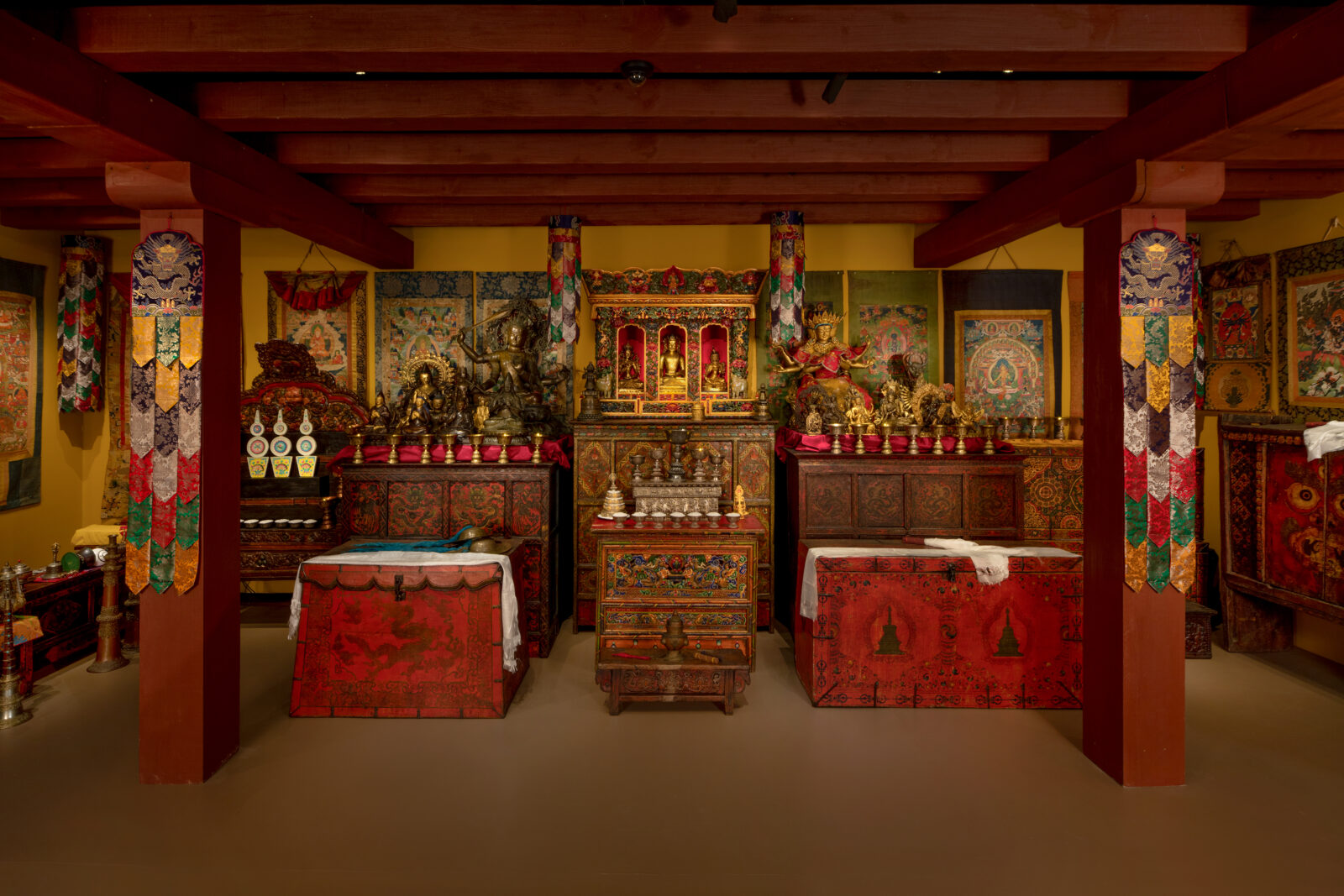Tibet
18th century
Tibet
18th century
Offering tables (chog tri) are used for butter lamps, offering bowls, and other offerings and are decorated with images appropriate for this purpose. Auspicious symbols, animals representing the directions – garuda, tiger, dragon, and snow lion – and images of offerings are typical. In this example’s decoration, a lama, or ritual master, presents a symbolic offering of the universe in the form of a mandala. Its front features eight offering goddesses with the Seven Symbols of a Universal Ruler (Sanskrit: chakravartin). The side panels depict eight kinds of offerings, and below them are the Eight Auspicious Symbols divided between each panel.

Photo by Dave de Armas
Prescribed practices that carry symbolic meaning and value within a specific tradition and are intended to attain a desired outcome. Rituals are usually done as part of a ceremony or regular routine.
Today, Tibetans primarily inhabit the Tibetan Plateau, situated between the Himalayan mountain range and the Indian subcontinent to the west, Chinese cultural regions to the east, and Mongolian cultural regions to the northeast. During the 7th to 9th century, Tibetan rulers expanded their empire across Central Asia, and established Buddhism as the state religion.
Get the latest news and stories from the Rubin, plus occasional information on how to support our work.